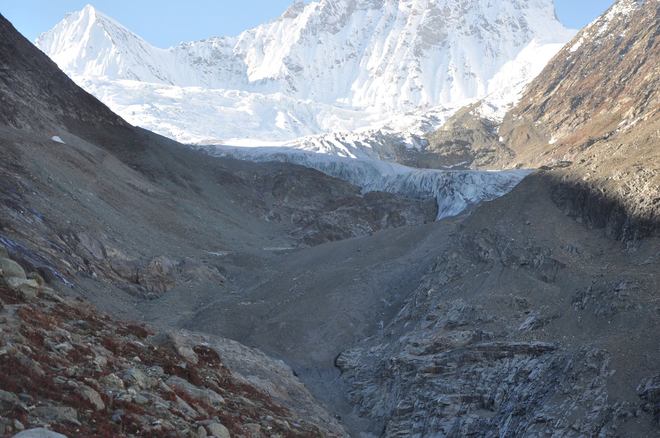Kashmir has highest black carbon concentration
Majid Jahangir
Tribune News Service
Srinagar, July 20
The lush green forests and snow-clad peaks of Kashmir might given an impression that the Valley is free from pollution, but the experts point out that Kashmir has three times more black carbon in the atmosphere than neighbouring states.
As a consequence, the presence of high concentration of black carbon is being cited as a major reason for the melting and shrinking of glaciers in the region, 20 percent which have vanished in the last six decades.
“The glaciers in the region are melting at a faster pace than the other glaciers in the rest of the Indian Himalayas. We are studying this but so far we have found that black carbon levels are three times more than the atmosphere in other neighbouring states,” said Shakil Romshoo, head of department of earth sciences, Kashmir University.
Black carbon is made up of ultrafine particles produced by the inefficient combustion of all kinds of fuels, from wood to diesel to kerosene, producing a dark soot, which is incredibly efficient at absorbing light and turning it into heat. It is precisely this property of black carbon to absorb heat that makes it the second biggest contributor to climate change after carbon dioxide.
The Earth Sciences Department of the University of Kashmir is studying 30 glaciers in Jammu and Kashmir of the total 110 glaciers in the region. The study has found that two or three glaciers have completely loss and all others have shrunk.
Romshoo said a study had found that black carbon and particulate matter in 40 places in Kashmir had almost three times more black carbon than its neighbouring states. “In our study we found that Uttarakhand has 500 nanograms of black carbon per square metre while we have nearly 1,600,” he said.
He said there was a possibility that of some of the black carbon was flying from neighbouring states or even Pakistan or China. Romshoo said they were finding and investigating the causes using scientific instrumentation.
“Due to the high black carbon the melting of glaciers is a real worry for scientists,” Romshoo said. “Over the last 50 years, two mountain ranges, Shamasbari and Pir Panchal, have lost all their glaciers,” he added.
He said the Pir Panchal range had been receiving 7.4 metres snow from November 1 to April 30, but despite the heavy snowfall, there was not a single glacier left. “We are left with a handful of glaciers around Sindh and Lidder basin and they too are shrinking,” he said.









